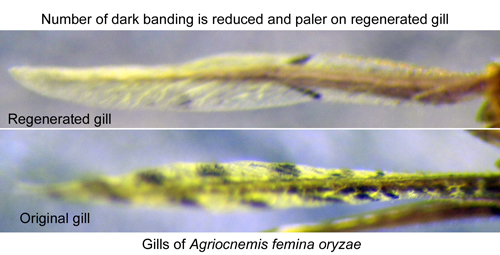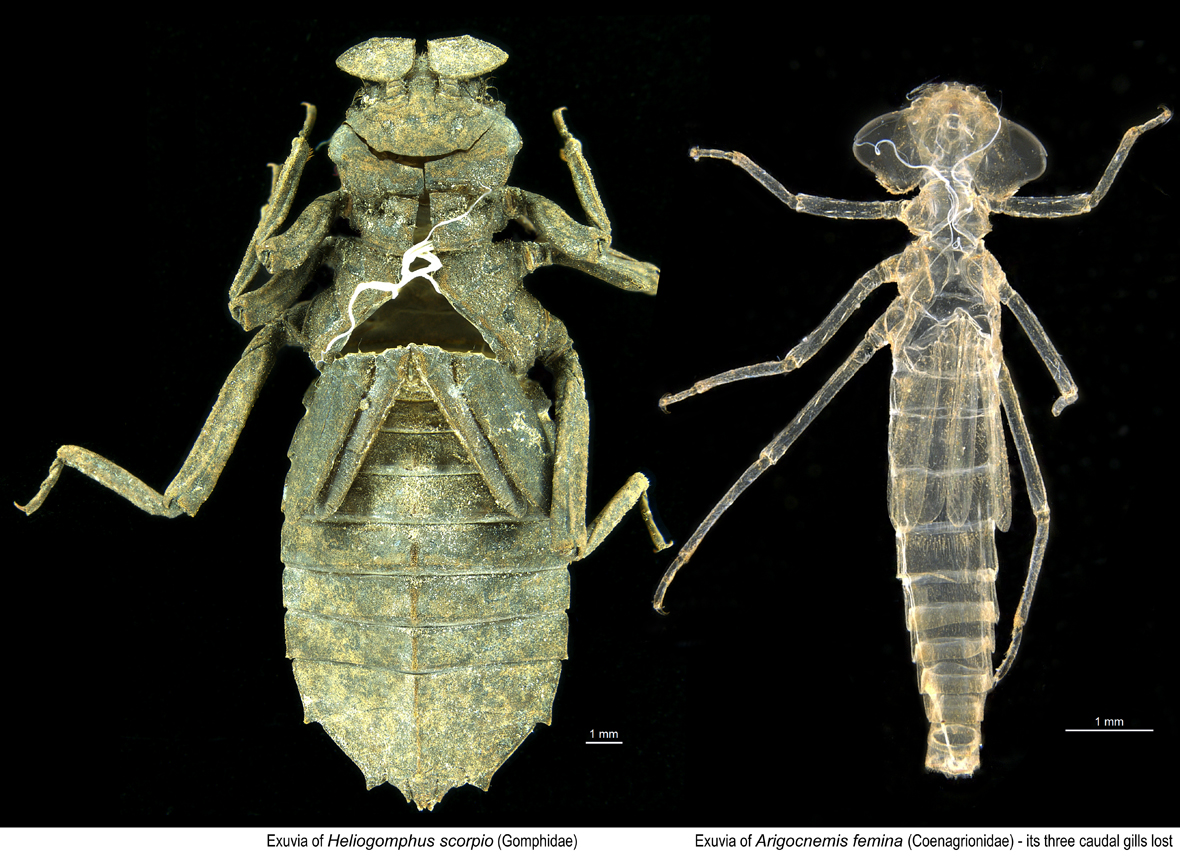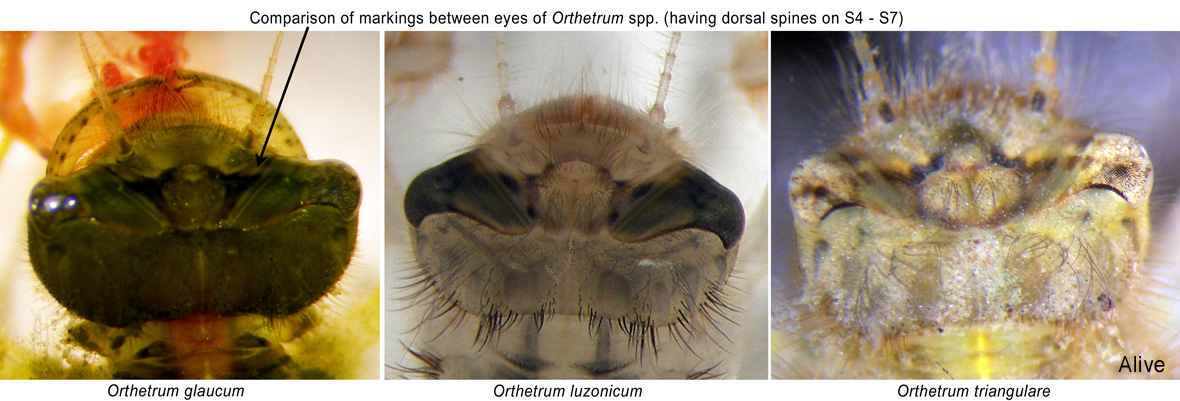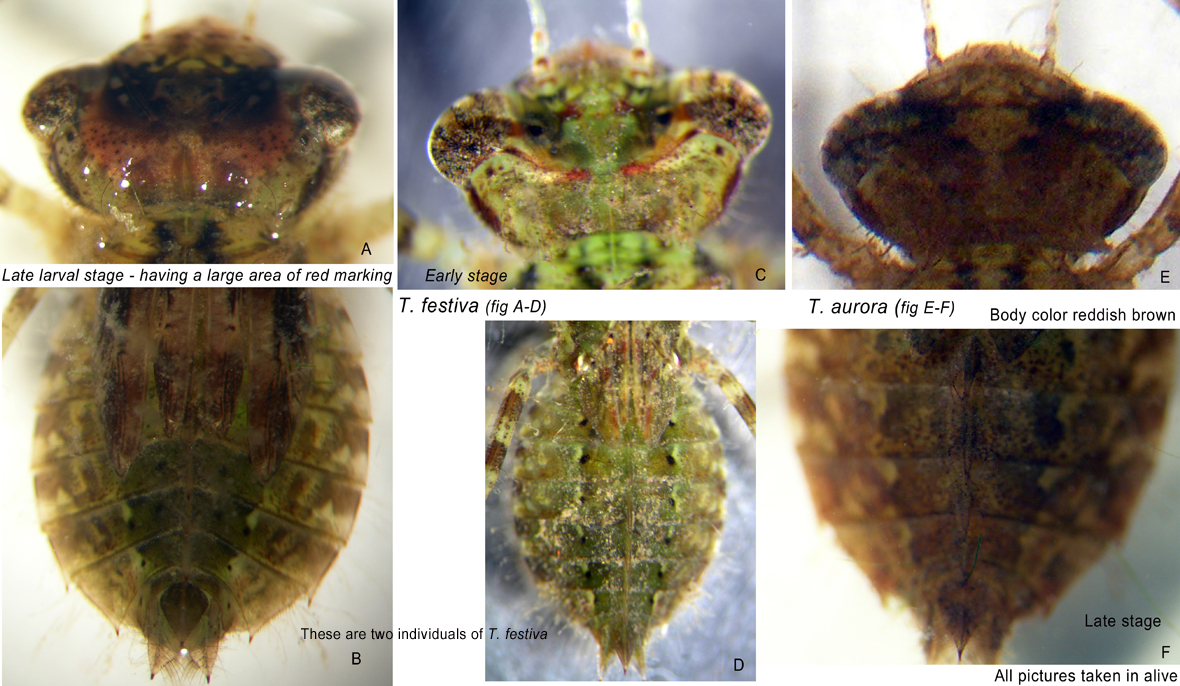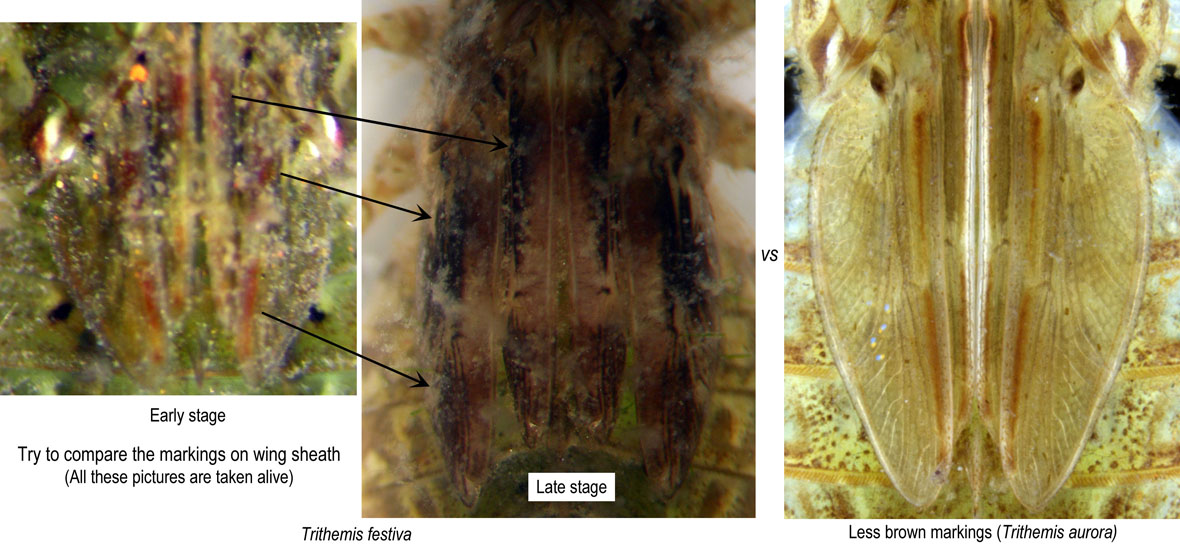Odonata
The total number of odonate species in Hong Kong is 124 comprising six families of the suborder Anisoptera (dragonflies) and nine families of the suborder Zygoptera (damselflies). The terrestrial adults are well-known and have been extensively studied, but the aquatic larvae of many species neither have been described nor yet been figured, it is worthy creating this pictorial guide as an aid to identify species of larval odonates in Hong Kong. In order to facilitate the identifications of some larvae, rearing larvae for adult emergence have been carried out in HKU Freshwater Aquarium.
For a species identification, its body size and shape would be the most general appearance at the first glance. However, mis-identification might be apparent by using such body traits solely because the appearance might look greatly different under some circumstances. We need to consider other features as many as possible to conclude what the species is.
 |
|
 |
|
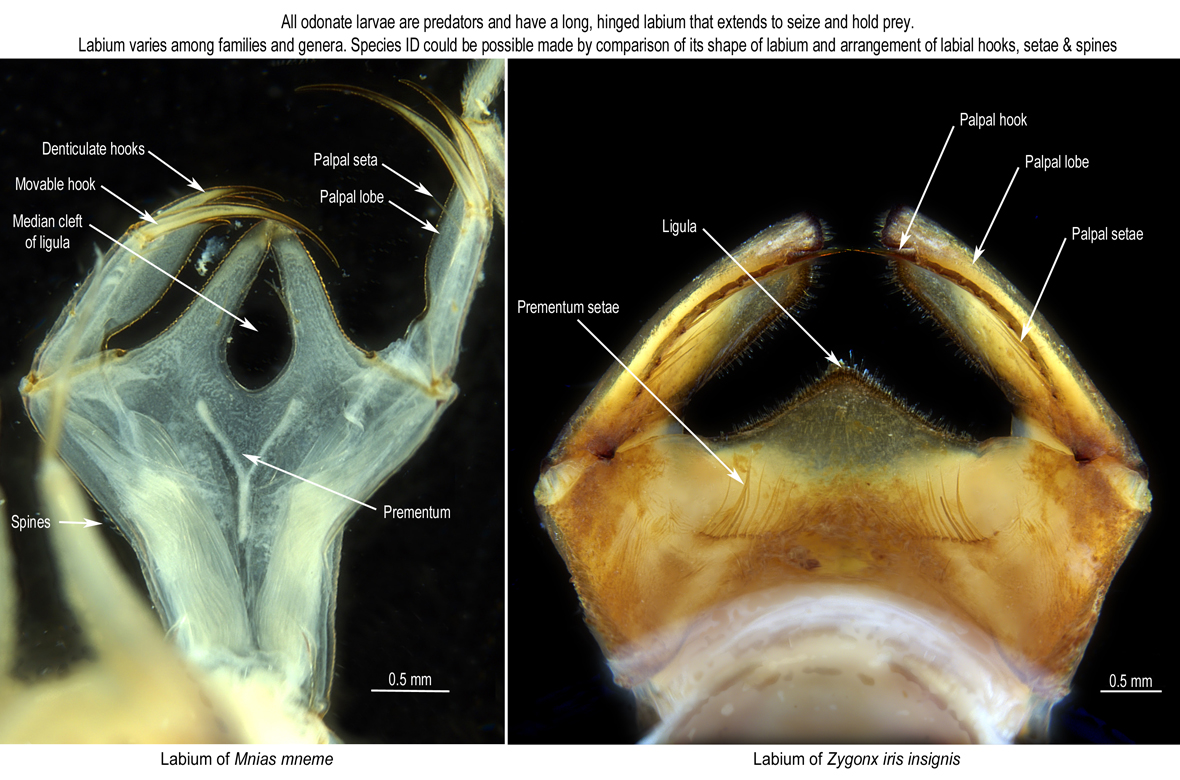 |
|
Damselflies, larvae have three (or rarely two) external gills situated at the tip of the abdomen forming expanded sacs or flat blades, but dragonfly larvae lack external gills but have internal gills within the rectum, and respiration involves muscles that force water in and out through the anus. |
|
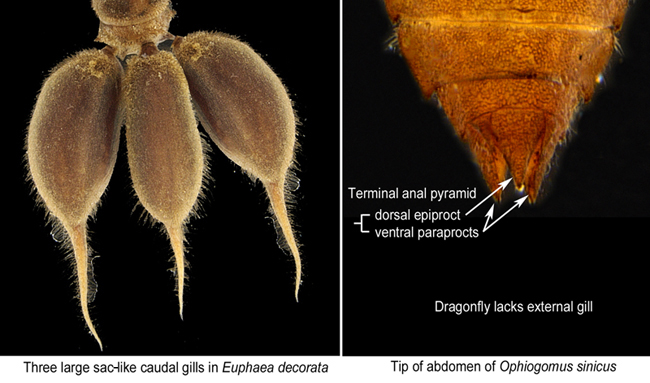 |
Caudal gills are diverse and species specific, and their shape and marking can be used for identification. However, caudal gills may be easily shed. The regenerated gills may be smaller and different from their original form.
|
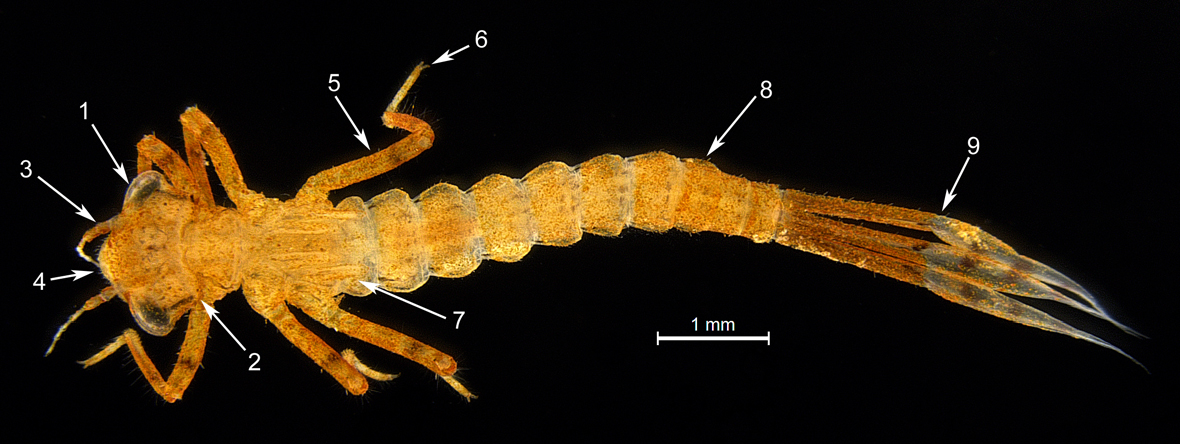 |
|
For families or genera identification, the examination of larval features should be conducted as follow: |
|
Checklist of Hong Kong Anisoptera (Dragonflies) |
|||
Aeshnidae Cordulegastridae Macromiidae Cordullidae
|
Gomphidae Libellulidae (ID key as follow) |
Libellulidae (continued) |
|
| ** species regarded as vagrant *** species at uncertain status |
|||
Checklist of Hong Kong Zygoptera (Damselflies) |
||||
Philogangidae Calopterygidae Chlorocyphidae Euphaeidae
|
Coenagrionidae |
Platycnemidae Platystictidae
|
Lestidae Megapodagrionidae
|
|
| * species known from historical records (i.e. pre-1980s) - regarded locally extinct | ||||
Apart from the examination of larvae, we could collect the exuviae from vegetation near their habitats in some occasions. It is another way to find out some lurking species. Since the characteristics would be fully developed in the final instar larvae, it would be reliable for species identification by examination of exuviae. However, it would be still difficult for doing this particularly for damselflies because their fragile caudal gills might be lost easily. |
||||||||||||||||||||||||||||||||||||||||||||||||||||||||||||||||||||||||||||||||||||||||||||||||||||
|
||||||||||||||||||||||||||||||||||||||||||||||||||||||||||||||||||||||||||||||||||||||||||||||||||||
By comparison of pictures in each families, it is not difficult to match the corresponding genus or species. However, Libellulidae is the largest odonate family in Hong Kong. Here, the characteristics of local species of libellulids are compared to indicate their diversity. |
||||||||||||||||||||||||||||||||||||||||||||||||||||||||||||||||||||||||||||||||||||||||||||||||||||
Comparison of some heads in Libellulidae |
||||||||||||||||||||||||||||||||||||||||||||||||||||||||||||||||||||||||||||||||||||||||||||||||||||
The examination of head including inspecting eye size and angle of eye projection should be needed for species identification. Besides, the other character traits like any distinct marking or setae should be considered as well. Coloration in this case might not be a reliable clue because some specimens have been preservated, their colorations are quite different from the originals. |
||||||||||||||||||||||||||||||||||||||||||||||||||||||||||||||||||||||||||||||||||||||||||||||||||||
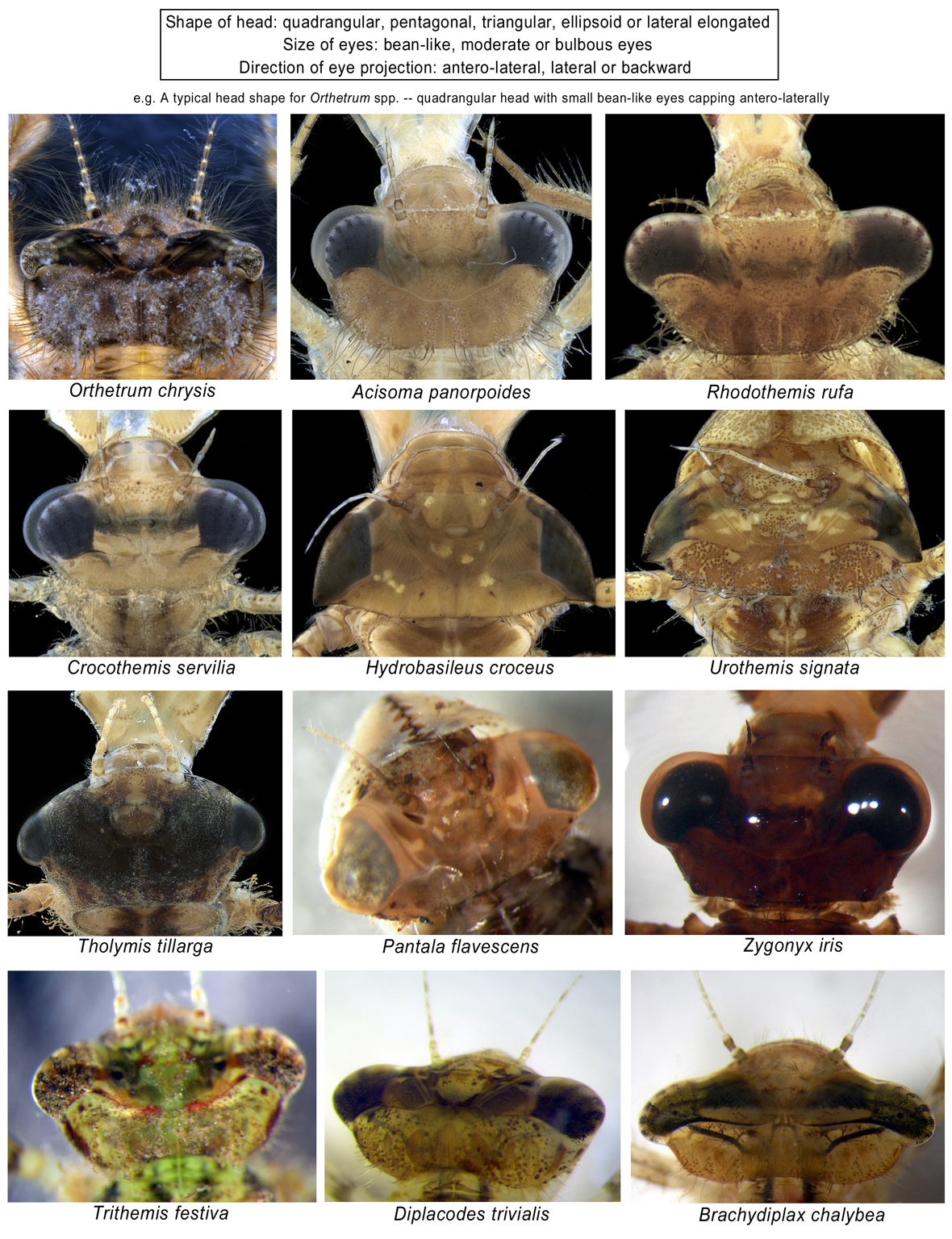 |
||||||||||||||||||||||||||||||||||||||||||||||||||||||||||||||||||||||||||||||||||||||||||||||||||||
The following tentative key for Libellulidae has been prepared using available descriptions from other keys and in-house species emergence for confirmation. ****** Presence of dorsal spine on abdomen ******
|
||||||||||||||||||||||||||||||||||||||||||||||||||||||||||||||||||||||||||||||||||||||||||||||||||||
****** Absence of dorsal spine on abdomen ******
Acknowledgements I would like to thank Graham Reels generously shared a lot of references and carried out strenuous field work for species collection. Ken So and Alphonse Tsang kindly gave me invaluable individuals in alive, that was the best way to record larval development and to confirm species ID by rearing larvae to adult emergence. Nicole Kit and Kestrel Lam provided a high quality of species imaging, underwent tedious image cleanup work and well-managed our inventory of odonate species. Philip Yip who is working in Allied Environmental Consultants Limited for sharing their specimens for imaging. e.g. Epophthalmia elegans and Rhyothemis variegata. Last but the least, Professor David Dudgeon is gratefully acknowledged for his full support and patience. Without him, this species guide never happened. Lily Ng Chiu Yee
Some references Shida, S., Ishida, K., Kojima, K. Sugimura, M. (1988) Illustrated guide for identification of the Japanese Odonata. Tokyo University Press, 328pp. Soltesz, K. (1996) Identification Keys to Northeastern Anisoptera Larvae. Workshops on Invertebrate Biodiversity: Dragonflies and Damselflies Theischinger, G. and Endersby, I. (2014) Australian Dragonfly (Odonata) Larvae: Descriptive history and identification. Memoirs of Museum Victoria 72: 73–120. Kawai, T. (1992) An illustrated Book of Aquatic Insects of Japan. Tokyo University Press, 409pp. Wilson, K.D.P. (1995) Hong Kong Dragonflies. Urban Council, Hong Kong, 211pp. Wilson, K.D.P. (1995) The Gomphid dragonflies of Hong Kong, with descriptions of two new species (Anisoptera: Gomphidae). Odonatologica 24(3): 319-340. Yeh, W-C. & Lien, J-C. (1995) Proven distribution of Nannophyopsis clara in Taiwan and morphological description of the ultimate instar larva. Tombo XXXVIII 1995 Tokyo: 24-26.
|
||||||||||||||||||||||||||||||||||||||||||||||||||||||||||||||||||||||||||||||||||||||||||||||||||||

